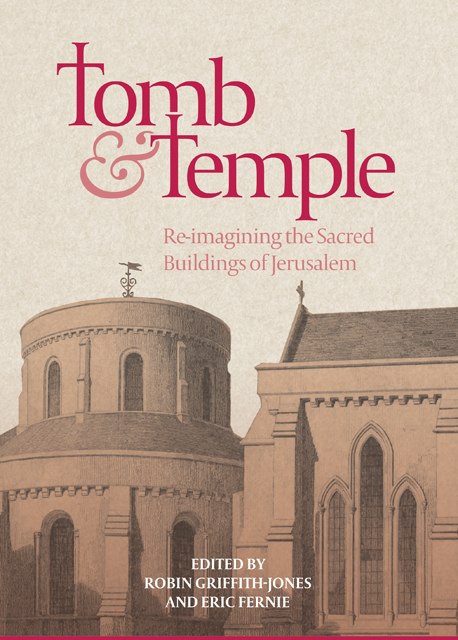Book contents
- Frontmatter
- Contents
- Illustrations
- Preface
- Contributors
- Abbreviations
- Editors’ Note
- Introduction
- Part I Re-presenting Jerusalem
- Part II The Church of the Holy Sepulchre
- Part III The Noble Sanctuary / The Temple Mount
- Part IV The Orthodox Churches
- Part V Round Churches in the West
- Appendix: The Knights’ Effigies: Newly Discovered Drawings by John Guillim, c. 1610
- Epilogue
- Index
- Already Published
Preface
Published online by Cambridge University Press: 17 January 2023
- Frontmatter
- Contents
- Illustrations
- Preface
- Contributors
- Abbreviations
- Editors’ Note
- Introduction
- Part I Re-presenting Jerusalem
- Part II The Church of the Holy Sepulchre
- Part III The Noble Sanctuary / The Temple Mount
- Part IV The Orthodox Churches
- Part V Round Churches in the West
- Appendix: The Knights’ Effigies: Newly Discovered Drawings by John Guillim, c. 1610
- Epilogue
- Index
- Already Published
Summary
Editors gladly and gratefully acknowledge many debts. Above all we are grateful to our contributors for their papers and for their patience during the book’s gestation. Further thanks quickly follow. Caroline Palmer and her colleagues at Boydell have taken all their characteristic care to make the book as handsome as its subject deserves; the J. C. Baker Trust and Lord Judge of Draycote have provided generous financial support. At the Temple in London Liz Clarke, Cath D’Alton, James Lloyd, Katrina Marchant and above all Catherine de Satgé have in various ways lightened our load.
The book is particularly timely. The aedicule in the Holy Sepulchre in Jerusalem was damaged in the earthquake of 1927; in 1947 a steel frame was built round it to prevent its collapse. In March 2017, after several months’ work of restoration, the aedicule was re-opened to pilgrims and visitors. The steel frame has been removed and the stone has been cleaned; what had seemed for decades to be a sad symptom of scarce resources and of division is now, once more, a fitting centrepiece to the rotunda. We add our own congratulations to all those who made possible the repair.
The rotunda of the Temple Church in London, modelled on the Holy Sepulchre, was in use by 1162. In 2010 Robin Griffith-Jones of the Temple Church and David Park of The Courtauld Institute of Art edited The Temple Church in London: History, Architecture, Art, published by Boydell. We are delighted to commit into our readers’ hands this sequel, produced with Boydell in a second happy collaboration between our two institutions, close neighbours in central London.
- Type
- Chapter
- Information
- Tomb and TempleRe-imagining the Sacred Buildings of Jerusalem, pp. xxvPublisher: Boydell & BrewerPrint publication year: 2018



